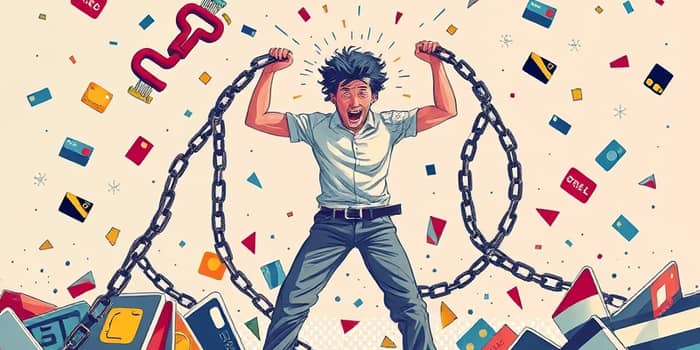
Modern credit card statements often spotlight a small number: the minimum payment due. For many consumers, this figure provides a false sense of security, a belief that they are managing their finances responsibly. Yet beneath this veneer lies chronic credit card debt that grows quietly and relentlessly, threatening long-term stability.
Making only the minimum payment may feel like a savvy move when budgets are tight, but it is a financial mirage. Without a clear strategy, cardholders can remain ensnared in interest charges for years or even decades.
As of the third quarter of 2024, an unprecedented 10.75% of credit card holders paid no more than their monthly minimum. This rate has climbed sharply since early 2021, marking the highest proportion recorded since late 2012. Economists warn that this trend signals distress among households and poses broader economic risks.
Industry data reveals that average APRs have risen in tandem. In Q1 2025, accounts carrying balances carried an average rate of 21.91%, while new card offers averaged 24.33%. With interest accumulating at these levels, the cost of deferring principal payments escalates rapidly.
Credit card issuers typically calculate the minimum payment as 1%–3% of the balance, plus any fees and accrued interest. On the surface, these low percentages make the payment seem manageable and rewarding, reinforcing the illusion of control.
Yet when only the minimum amount is paid each month, the balance declines at a snail’s pace. Compounded interest far outpaces principal reduction, leading to ballooning interest payments and extended payoff timelines.
For example, a $3,000 balance at an 18% APR paid down at 2% of the balance each month would take approximately 11.5 years to clear, costing an extra $3,154 in interest—more than the original debt.
Certain demographic and economic factors intensify the impact of minimum-only payments. Lower-income households, subprime credit borrowers, and families facing rising living costs often lack the flexibility to make larger payments.
Relaxed lending standards during the pandemic, coupled with stimulus measures, allowed many to carry higher credit limits, but also deepened vulnerabilities for those already under financial strain. The resulting pressure has driven more consumers to the brink of default.
Persistently making the minimum payment can have cascading effects on long-term financial health. Rising delinquencies—30-, 60-, and 90-day late payments—have all surged since 2019, with 90-day delinquencies hitting record highs by late 2024. Such trends reflect widespread budget stress and erode credit scores.
When debt payments primarily cover interest, little or no principal is eliminated. This stagnation hinders the ability to save for emergencies, invest in retirement, or pursue major life goals like homeownership.
The table above starkly illustrates how just a modest increase in payments can accelerate debt payoff and slash interest costs by more than half.
Combining these techniques creates a robust framework for escaping the credit card cycle. While each approach has trade-offs, selecting and adhering to one or two methods can yield meaningful progress.
Escaping the minimum payment trap demands both awareness and action. Recognizing the mechanics that keep interest compounding is the first step toward freedom.
By embracing balanced household budgets and pursuing optimized repayment plans, you can reclaim financial momentum. Whether you choose the debt avalanche, snowball, or a hybrid path, setting and exceeding minimums will accelerate your journey toward debt elimination.
The path out of revolving credit card debt begins with a single decision: to pay more than the minimum, invest in your future, and break free from the endless cycle once and for all.
References













